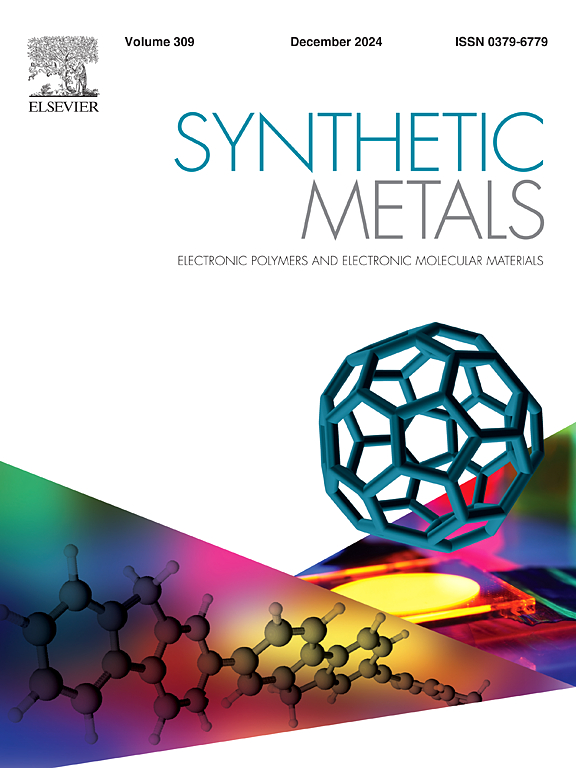High-sensitivity and durable MWCNT@CuNp/silicone rubber flexible strain sensor for human motion detection and composite structural monitoring
IF 4.6
3区 材料科学
Q2 MATERIALS SCIENCE, MULTIDISCIPLINARY
引用次数: 0
Abstract
Flexible strain sensors have attracted wide attention in various applications, such as wearable electronic devices, human motion detection, and soft robotics, due to their ability to measure mechanical deformation with a high degree of adaptability. In this study, we developed a silicon-based flexible strain sensor with a three-layer sandwich structure consisting of a silicon rubber substrate and MWCNT@CuNPs conductive material. The mixing of multi-walled carbon nanotubes (MWCNTs) and copper nanoparticles (CuNPs) aims to improve the electrical conductivity, sensitivity, and mechanical stability of the sensor. The sensor using MWCNT@CuNp material shows a sensitivity improvement of about 200 % compared to the SR@MWCNT@AgNp sensor, indicating superior electromechanical performance. The MWCNT@CuNp sensor test results show that the sensor has a measuring factor (GF) of 8.09 with high linearity (R² = 0.99) in the 0–80 % strain range. Mechanical durability tests showed that the sensor was able to withstand up to 1,200 loading and unloading cycles without significant performance degradation, proving its reliability for applications with repetitive strain. In addition, this sensor shows potential to be applied to various systems that require high sensitivity, good linearity, and superior mechanical durability. This sensor can not only be used in electronic skin to detect finger, wrist, elbow, and knee movements but also plays a role in monitoring strain changes in PLA/fiber glass/PLA composite materials during bending tests. These capabilities open opportunities for MWCNT@CuNPs sensors to be integrated in various engineering applications and smart material technologies.
高灵敏度,耐用MWCNT@CuNp/硅橡胶柔性应变传感器,用于人体运动检测和复合结构监测
柔性应变传感器由于具有测量机械变形和高度适应性的能力,在可穿戴电子设备、人体运动检测和软机器人等各种应用中引起了广泛的关注。在这项研究中,我们开发了一种硅基柔性应变传感器,它是由硅橡胶衬底和MWCNT@CuNPs导电材料组成的三层三明治结构。多壁碳纳米管(MWCNTs)和铜纳米颗粒(CuNPs)的混合旨在提高传感器的导电性、灵敏度和机械稳定性。与SR@MWCNT@AgNp传感器相比,使用MWCNT@CuNp材料的传感器的灵敏度提高了约200 %,表明具有优越的机电性能。MWCNT@CuNp传感器测试结果表明,该传感器在0 ~ 80 %应变范围内的测量系数(GF)为8.09,线性度高(R²= 0.99)。机械耐久性测试表明,该传感器能够承受高达1200次的加载和卸载循环,而不会出现明显的性能下降,证明了其在重复应变应用中的可靠性。此外,该传感器显示出应用于需要高灵敏度、良好线性度和卓越机械耐久性的各种系统的潜力。该传感器不仅可以用于电子皮肤中检测手指、手腕、肘部和膝盖的运动,还可以监测PLA/玻璃纤维/PLA复合材料在弯曲试验中的应变变化。这些功能为MWCNT@CuNPs传感器集成到各种工程应用和智能材料技术中提供了机会。
本文章由计算机程序翻译,如有差异,请以英文原文为准。
求助全文
约1分钟内获得全文
求助全文
来源期刊

Synthetic Metals
工程技术-材料科学:综合
CiteScore
8.30
自引率
4.50%
发文量
189
审稿时长
33 days
期刊介绍:
This journal is an international medium for the rapid publication of original research papers, short communications and subject reviews dealing with research on and applications of electronic polymers and electronic molecular materials including novel carbon architectures. These functional materials have the properties of metals, semiconductors or magnets and are distinguishable from elemental and alloy/binary metals, semiconductors and magnets.
 求助内容:
求助内容: 应助结果提醒方式:
应助结果提醒方式:


